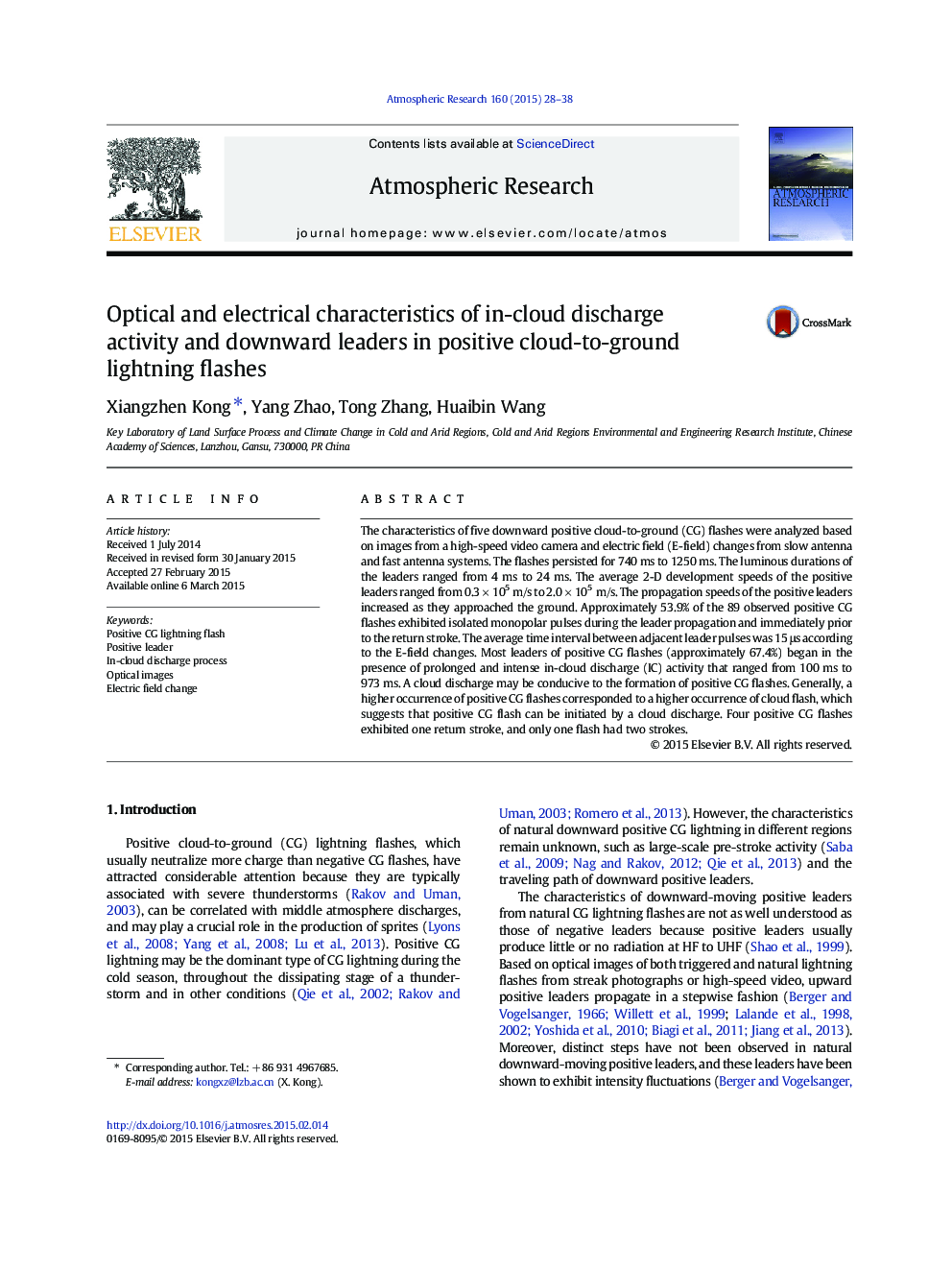| Article ID | Journal | Published Year | Pages | File Type |
|---|---|---|---|---|
| 4449751 | Atmospheric Research | 2015 | 11 Pages |
•The speed of natural downward positive leaders is calculated based on images from high-speed video camera.•The leader pulses are analyzed based on E-field.•The relation between the natural positive CG flash and the cloud flash is discussed.•The natural positive CG flashes are analyzed based on images and electric field changes and provide the basic data.
The characteristics of five downward positive cloud-to-ground (CG) flashes were analyzed based on images from a high-speed video camera and electric field (E-field) changes from slow antenna and fast antenna systems. The flashes persisted for 740 ms to 1250 ms. The luminous durations of the leaders ranged from 4 ms to 24 ms. The average 2-D development speeds of the positive leaders ranged from 0.3 × 105 m/s to 2.0 × 105 m/s. The propagation speeds of the positive leaders increased as they approached the ground. Approximately 53.9% of the 89 observed positive CG flashes exhibited isolated monopolar pulses during the leader propagation and immediately prior to the return stroke. The average time interval between adjacent leader pulses was 15 μs according to the E-field changes. Most leaders of positive CG flashes (approximately 67.4%) began in the presence of prolonged and intense in-cloud discharge (IC) activity that ranged from 100 ms to 973 ms. A cloud discharge may be conducive to the formation of positive CG flashes. Generally, a higher occurrence of positive CG flashes corresponded to a higher occurrence of cloud flash, which suggests that positive CG flash can be initiated by a cloud discharge. Four positive CG flashes exhibited one return stroke, and only one flash had two strokes.
